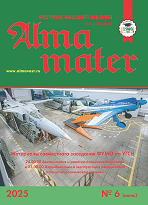UDC 37.09
https://doi.org/10.20339/AM.10-20.049
V.G. Nesterenko is Cand.Sci. (Pedagogy), doc. at Volgograd State Social-Pedagogical University e-mail: carryann@mail.ru
Presented is research study on projection and planning of a blended learning model in a field of formal university professional education. The article covers some problems, connected with modern learning methods and tendencies of their development. Blended learning is one of advanced tools of effective educational process, studied by teachers all over the world. The first important item in studying of blended learning is characteristics of its tendencies and theoretical bases to define ways and methods of its implementation. The article gives examples of basic theory searching, and ways and necessary conditions for blended learning environment arranging. According to many scientists, blended learning environment has all opportunities to use principles of constructivism theory, but adding of social contest in education allows ideas of social constructivism to be adopted in blended learning, as its aim is to acquire knowledge through the prism of cooperation and teamwork.
Key words: blended learning, IT educational resources, flexibility of blended learning forms and methods, constructivism theory, cognitive constructivism conception, social constructivism ideas.
References
- Dolgova, T.V. Blended learning as innovation of 21st century. URL: https://interactiv.su/2017/12/31/
- Lomonosova, N.V. To the problem of using of the system of blended education. URL: http://www.openeducationeuropa.eu/sites/default/files/news/elearning%20survey.pdf
- Allen, E. & Seaman, J. (2013). Changing Course: Ten Years of Tracking Online Education in the United States. URL: http://onlinelearningsurvey.com/highered.html
- The “Bricks and Clicks” Towards Success: A Discussion Paper on a Blended Learning. URL: https://tlss.uottawa.ca/site/files/docs/TLSS/research-unit/Bricks_and_Clicks_Web.pdf
- Office of the Vice-Provost, Academic Affairs Teaching and Learning Support Service (TLSS) Office of Quality Assurance (OQA) 2018-2019 Overview. URL: https://tlss.uottawa.ca/site/files/docs/TLSS/research-unit/Bricks_and_Clicks_Web.pdf
- Ahmad, M. Al-Huneidi and Jeanne Schreurs. Constructivism Based Blended Learning in Higher Education Hasselt University, Hasselt, Belgium 8 February 2012. URL: http://dx.doi.org/10.3991/ijet.v7i1.1792
- Bryceson, K. (2007). The online learning environment — a new model using social constructivism and the concept of ‘ba’ as a theoretical framework. URL: https://espace.library.uq.edu.au/view/UQ:164346
8. Pensinger, E.R. Constructivist Learning Theory in the Blended Learning Environment.URL: https://emilypensinger.com/portfolio/resources/EdTech504SynthesisPaper.pdf











.png)






